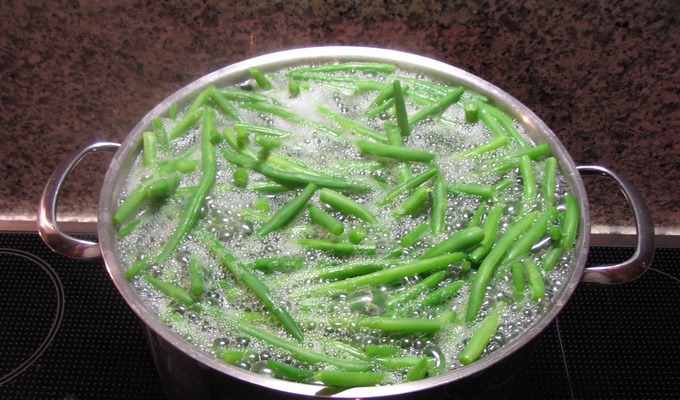Blanching is a cooking process in which a food, usually a vegetable or fruit, is scalded in boiling water, removed after a brief, timed interval, and finally plunged into iced water or placed under cold running water to halt the cooking process. Blanching foods helps reduce quality loss over time. Blanching is often used as a treatment prior to freezing, drying, or canning—heating vegetables or fruits to inactivate enzymes, modify texture, remove the peel, and wilt tissue. The inactivation of enzymes preserves color, flavor, and nutritional value. The process has three stages: preheating, blanching, and cooling. The most common blanching methods for vegetables/fruits are hot water and steam, while cooling is either done using cold water or cool air. Other benefits of blanching include removing pesticide residues and decreasing microbial load. Drawbacks to the blanching process can include leaching of water-soluble and heat sensitive nutrients and the production of effluent.
Blanching
cooking process

Categories:
Technique
Has applications:
Blanched almond
Also known as:
English:
blanched
Wikidata ID:
Q506763
Wikipedia title:
Blanching (cooking)
References:
Article content licensed under CC-BY-SA; original content from Wikimedia Foundation; image data under CC-BY-SA from Wikimedia Foundation
ID: 20914